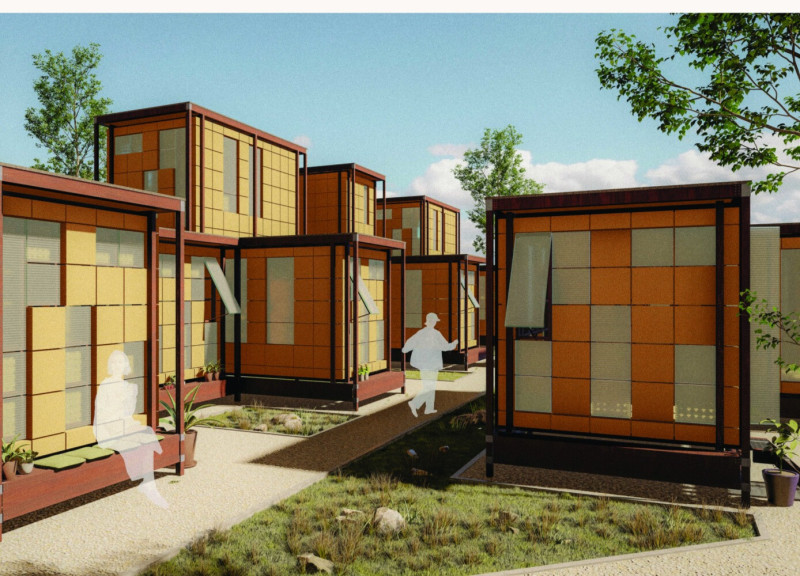5 key facts about this project
At its core, the project functions as a multipurpose space, intended to serve a community with various needs. This dynamic design allows for flexibility and adaptability, which are key elements in modern architectural endeavors. The interplay between indoor and outdoor areas is skillfully executed, with large windows and open spaces that invite natural light, fostering a sense of connection with nature. This spatial relationship highlights an essential concept in architecture today: the blending of built environments with the natural world.
Materiality plays a crucial role in this project, where a deliberate selection of materials influences both aesthetics and performance. The primary materials utilized include concrete, glass, wood, and steel, each chosen for its specific characteristics and contribution to the overall design ethos. Concrete is used for its durability and structural integrity, while expansive glass elements provide transparency and visual continuity between the interior and exterior. The incorporation of wood adds warmth and texture, enhancing the sensory quality of spaces, while steel components introduce a contemporary edge and facilitate innovative structural solutions.
The project's design language showcases a thoughtful balance between form and function. Architectural details such as overhangs, shading devices, and strategic landscaping work together to optimize energy efficiency and comfort for inhabitants. These elements underscore the project's commitment to sustainability, ensuring that the architecture minimizes its environmental impact while enhancing user interaction.
Unique design approaches are evident in the sensitivity to site conditions and the integration of sustainable practices throughout the construction process. The design emphasizes the importance of passive solar strategies for heating and cooling, utilizing the sun's path to reduce reliance on mechanical systems. This not only contributes to lower operational costs but also supports a broader dialogue on sustainability in architecture.
One of the standout aspects of this project is its innovative approach to community engagement. Spaces within the building are designed to encourage interaction, fostering a sense of community among users. These areas are thoughtfully arranged to facilitate social gatherings and collaborative work, further emphasizing the project's role as a hub for connection and creativity.
As the project unfolds before the viewer, it becomes apparent that every decision made during the design process was carefully considered to promote functionality while also expressing the identity of the space. From the choice of materials to the layout of communal areas, each element reinforces the intent behind the design. The architectural plans and sections reflect a meticulous attention to detail, showcasing the depth of thought that has gone into every aspect of the project.
For those interested in exploring the intricacies of this architectural design, a review of the architectural plans and sections will provide deeper insights into the underlying ideas that shaped the project. The way architecture interacts with its environment, responds to user needs, and adheres to sustainable practices exemplifies the potential of thoughtful design. Engaging with this project presentation is an opportunity to appreciate a modern architectural approach that marries functionality with a strong sense of place.


























